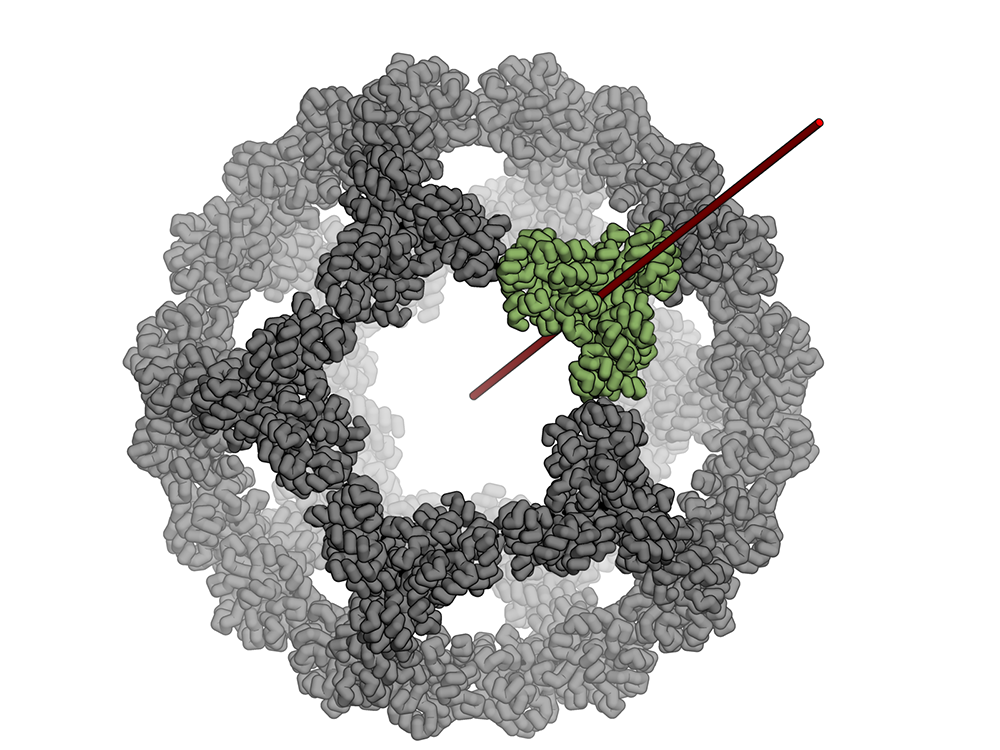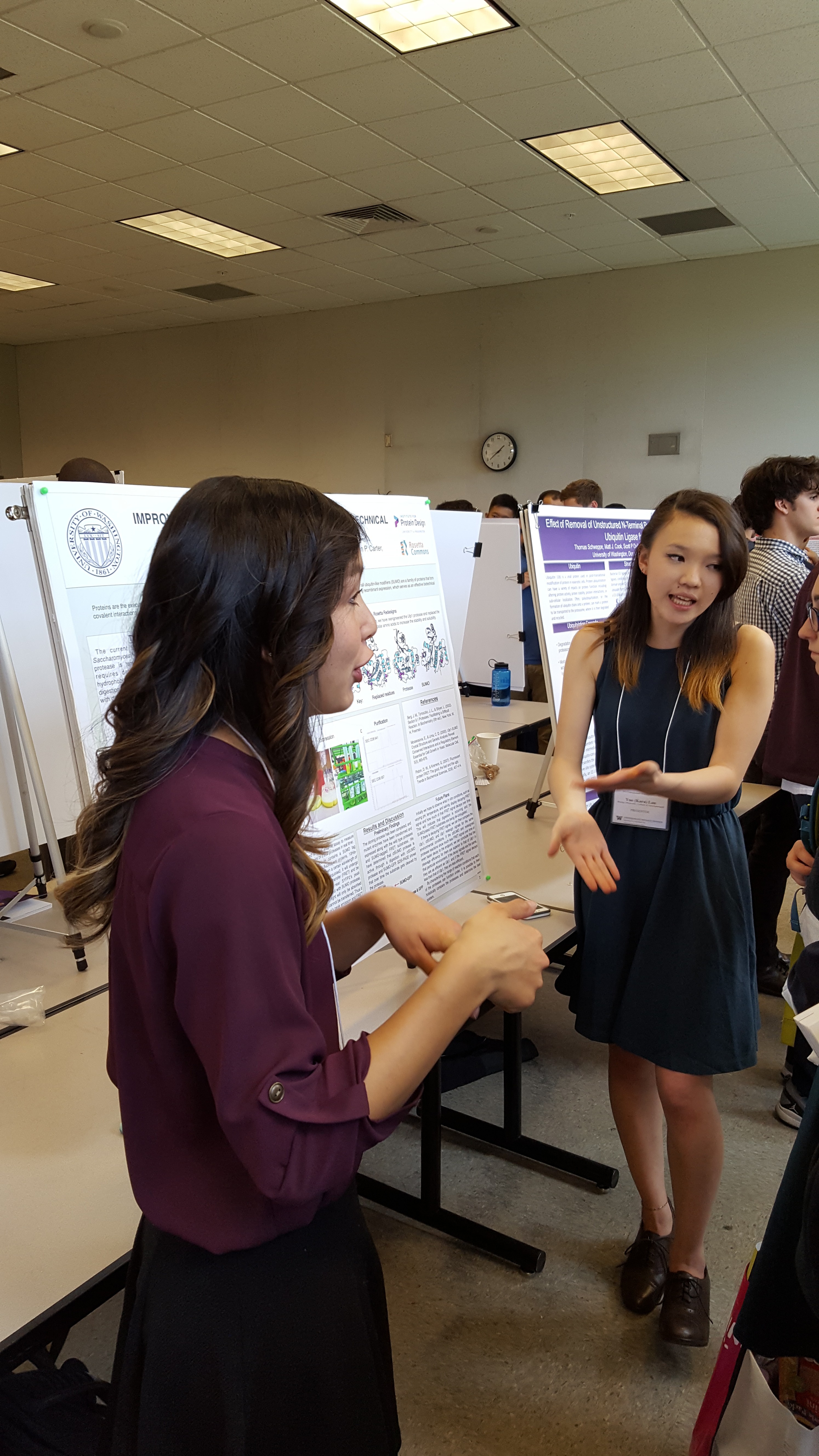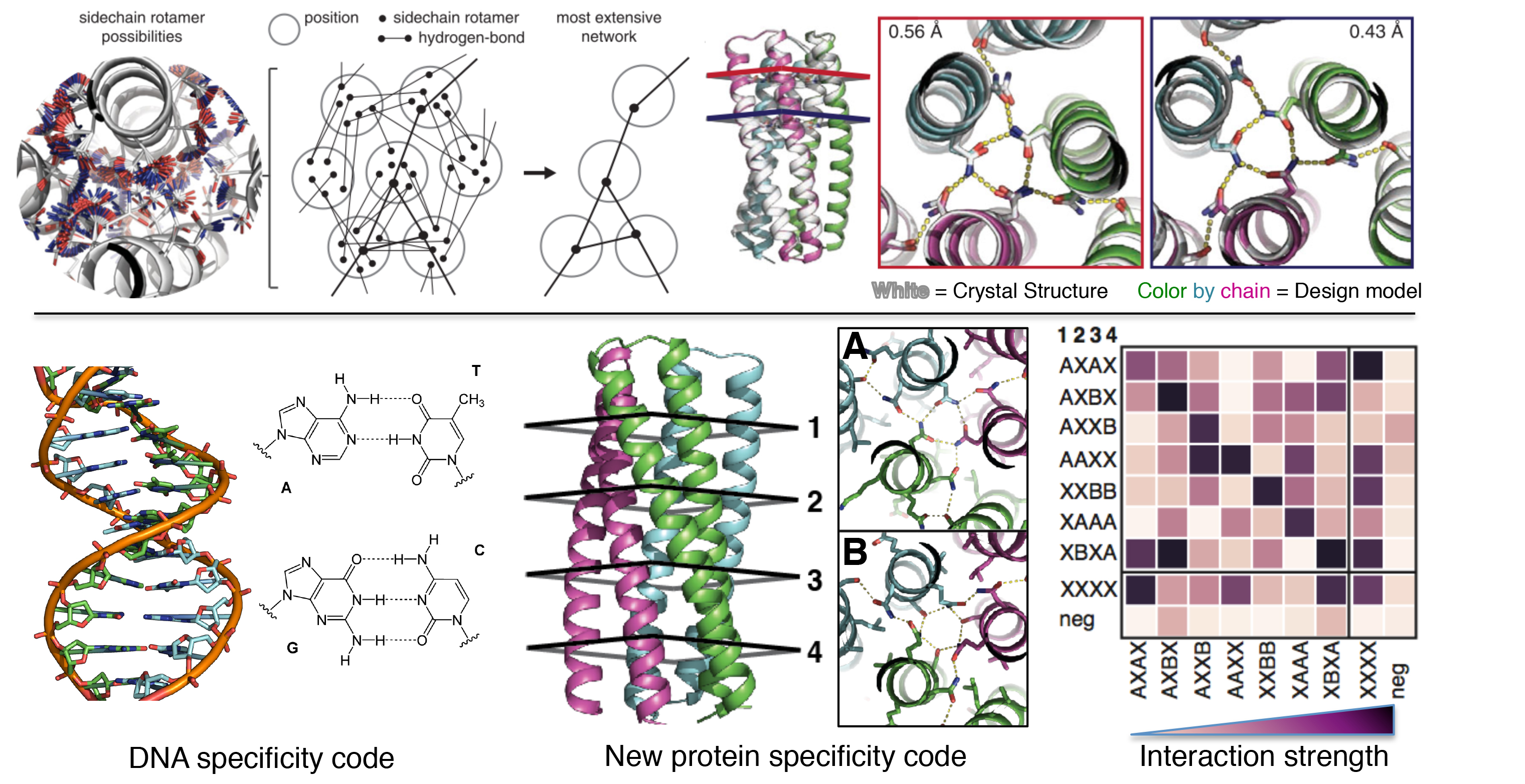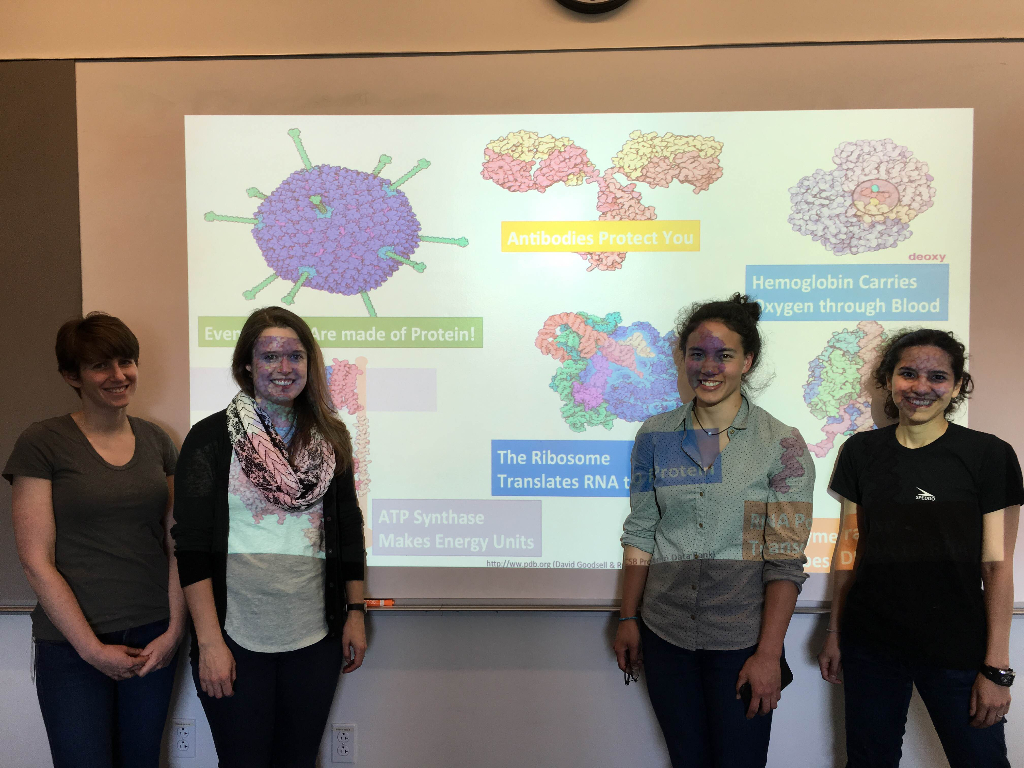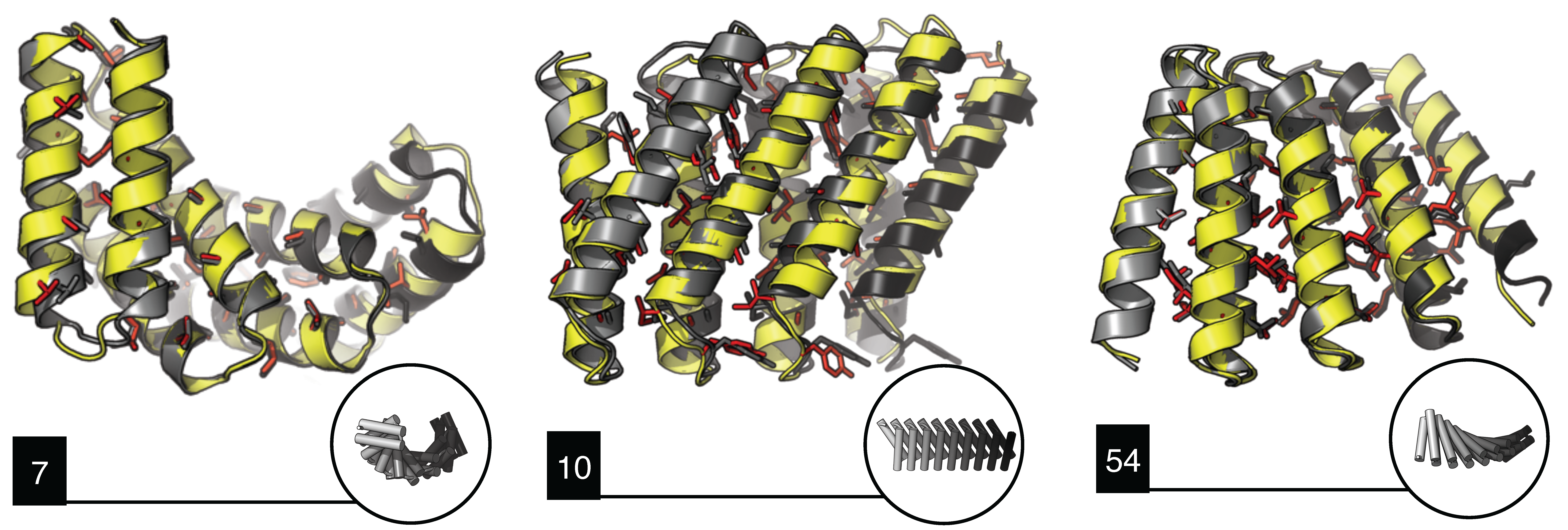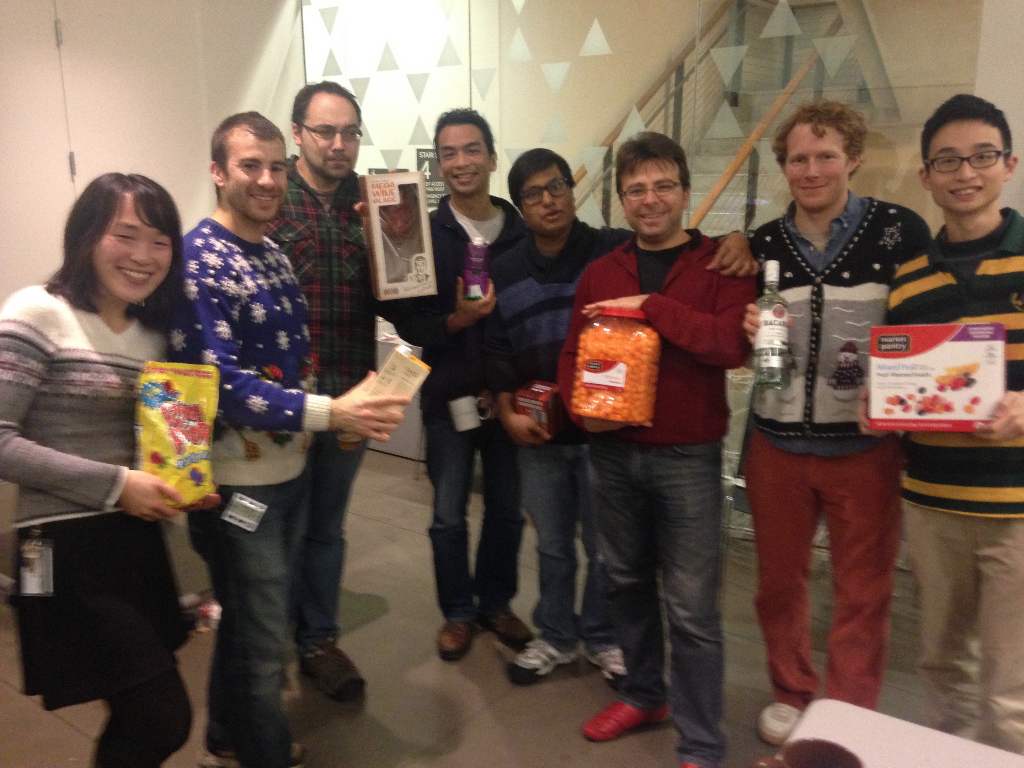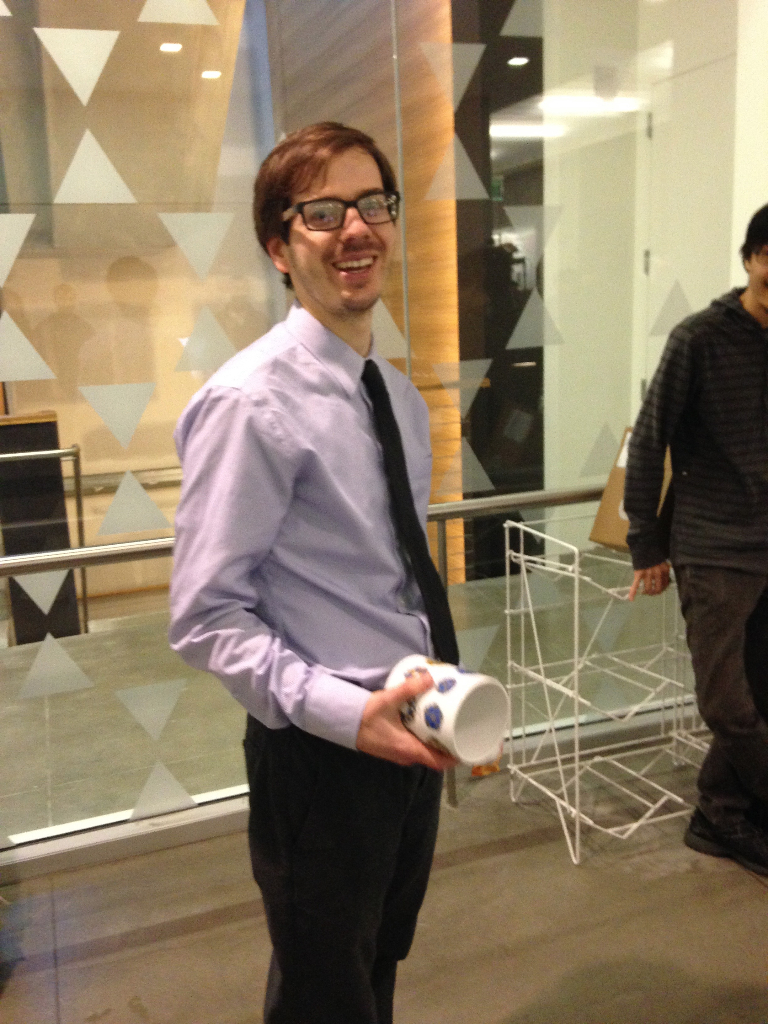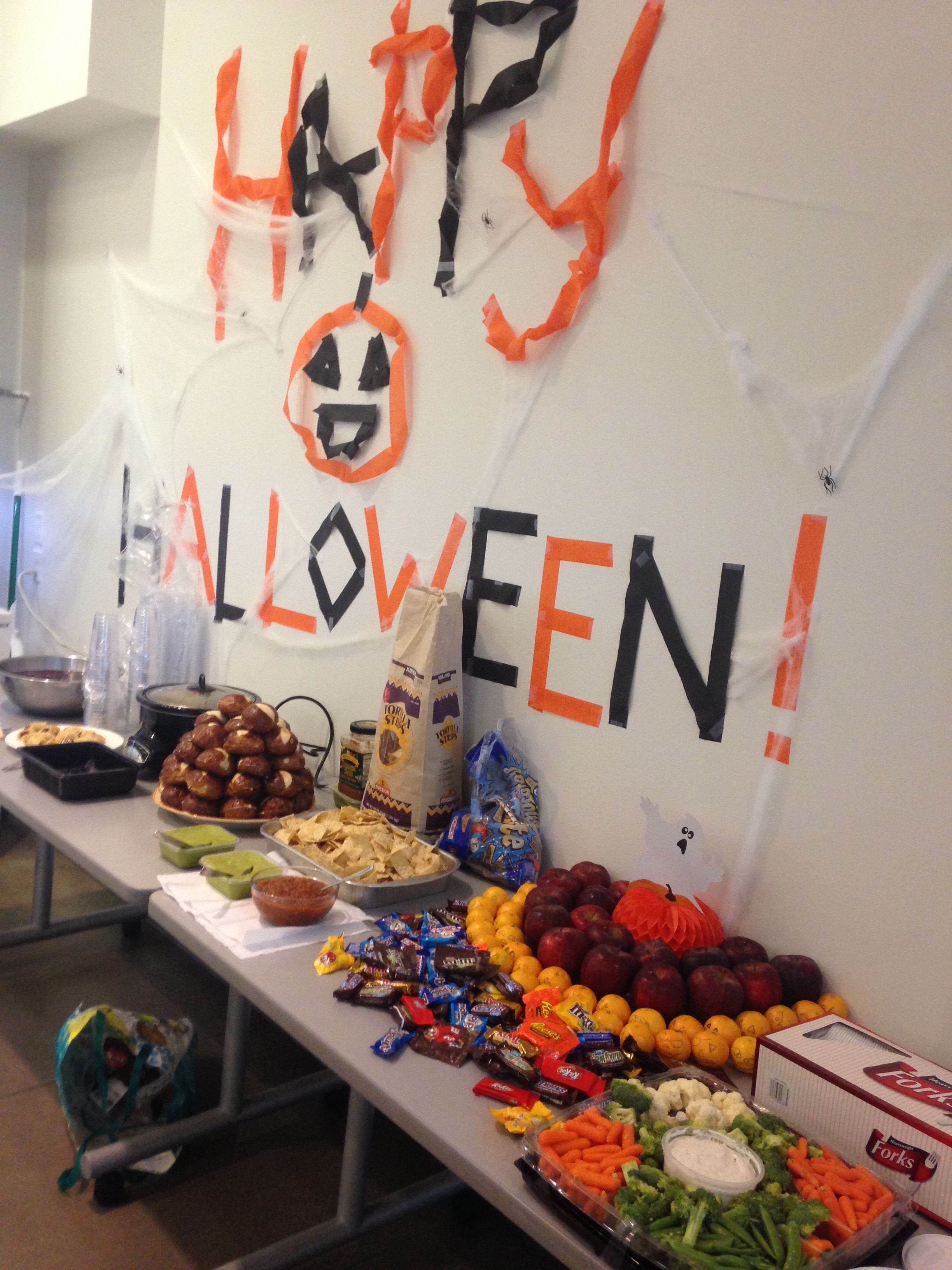-
Design of a hyperstable 60-subunit protein icosahedron
The icosahedron is the largest of the Platonic solids, and icosahedral protein structures are widely used in biological systems for packaging and transport1, 2. There has been considerable interest in repurposing such structures3, 4, 5 for applications ranging from targeted delivery to multivalent immunogen presentation. The ability to design proteins that self-assemble into precisely specified,…
-
Undergrads Being Scientists!
On Friday, May 20, 2016, three of our undergrads participated in the 19th annual Undergraduate Research Symposium. Tessa Howard, Kara Lau, and Vanessa Nguyen presented posters on projects/topics stemming from their work done in our labs. We’d like to recognize the excellent job they did on their presentations! Please see below for their titles and…
-
De novo design of protein homo-oligomers with modular hydrogen-bond network-mediated specificity
General design principles for protein interaction specificity are challenging to extract. In DNA, specificity arises from a limited set of hydrogen-bonding interactions in the core of the double helix to design and build a wide range of shapes. In proteins, specificity arises largely from buried hydrophobic packing complemented by irregular peripheral polar interactions. Protein-based materials…
-
Community Involvement: Expanding Your Horizons Conference
Over the course of two weekends, one in March and the other in April, volunteers from the lab presented Foldit workshops at the Expanding Your Horizons conferences. They are aimed at girls in Jr and High School and focus on STEM topics. Our workshop was one of over 50+ that were available to chose from,…
-
Exploring the repeat protein universe through computational protein design
A central question in protein evolution is the extent to which naturally occurring proteins sample the space of folded structures accessible to the polypeptide chain. Repeat proteins composed of multiple tandem copies of a modular structure unit are widespread in nature and have critical roles in molecular recognition, signalling, and other essential biological processes. Naturally…
-
2015 Lab Holiday Party
On Friday the 18th we had our lab Holiday party! It was supposed to be ugly sweater attire, but only a few of us came dressed appropriately. Fortunately, more people were proactive when participating in the potluck aspect! We had homemade goodies galore, including a creme caramel that had rave reviews, many delicious cookies, an…
-
Jacob Bale’s Defense
On Thursday, December 17th, Jacob Bale defended and passed with flying colors! To celebrate, we had various kinds of ice cream floats; some of his family members who attended the defense even joined us in enjoying the sweet treats. We look forward to seeing what Jacob will do in the future. Congratulations! [envira-gallery id=”628″]
-
Halloween party pictures!
Back in October, the Baker lab threw a party to celebrate “All Hallows Eve”! Costume was encouraged, but not required, though a contest was held for best group outfit and best solo outfit. The gang from “Inside Out” made an awesome showing, and all five emotions were present. There was also a battle of good…
